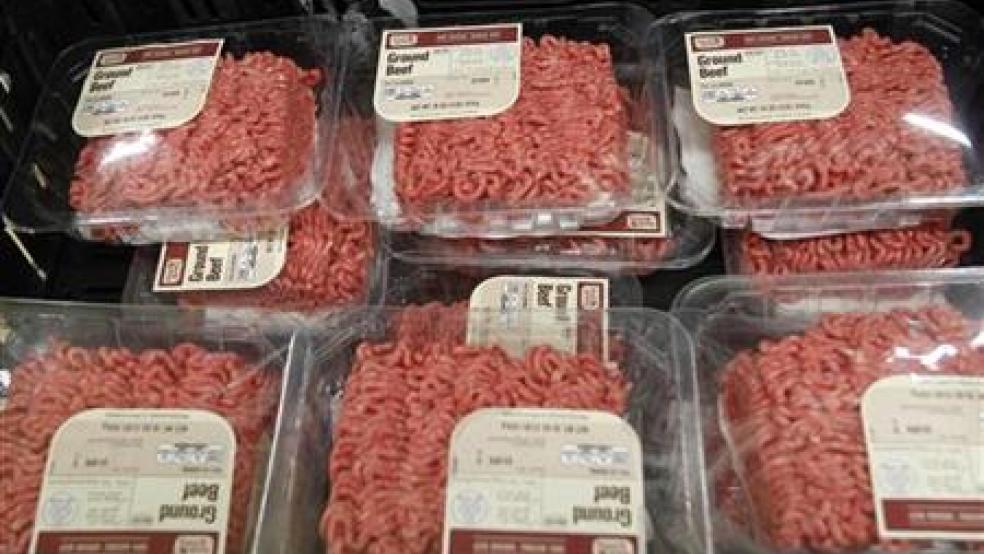BRUSSELS/CHICAGO (Reuters) - Major export markets for U.S. beef from Canada to Japan stayed open after the United States reported its first case of mad cow disease in six years amid assurances that rigorous surveillance had safeguarded the food system.
U.S. live cattle futures were higher on Wednesday, but only recovered about half of what they lost on Tuesday when the market posted its biggest drop in seven months.
U.S. authorities quickly told consumers and importers around the world there was no danger that meat from the infected California dairy cow would enter the food chain. The cow tested positive for bovine spongiform encephalopathy (BSE), commonly called mad cow disease.
Mexico, South Korea, Japan, Canada and the European Union said they would continue to import U.S. beef, although two major South Korean retailers halted sales and Indonesia, a small buyer, suspended shipments.
In 2011, Canada, Japan, Mexico and South Korea combined took 65 percent, or 1.82 billion lbs, of U.S. beef exports.
"This finding will not affect trade between the U.S. and Canada," the Canadian Food Inspection Agency said in a statement on Wednesday. "Both countries have implemented science-based measures to protect animal and human health.
Japan's Chief Cabinet Secretary Osamu Fujimura said the new case of Bovine Spongiform Encephalopathy (BSE) reported on Tuesday should have no bearing on the Trans-Pacific Partnership (TPP) talks.
Japan already only allows imports of U.S. and Canadian beef from cattle aged 20 months or less.
USDA CONTACTING TRADING PARTNERS
U.S. Secretary of Agriculture Tom Vilsack said the positive response from trade partners was a sign of confidence in the preventative measures taken by the United States and that he was not concerned about potential a cut off in imports.
"I'm sending out a letter to 20 major trading partners today to reassure that the products they're buying are safe," Vilsack told Reuters Insider.
Benchmark June live cattle futures on the Chicago Mercantile Exchange were recovered about half of what they lost on Tuesday when the market fell the 3-cent daily trading limit.
Shares were little changed on Wednesday in leading U.S. beef producers Tyson Foods Inc and JBS-USA
Samples from the infected cow have been sent to laboratories in Canada and Britain for final confirmation, Paris-based World Organization for Animal Health (OIE) said in a statement, adding that the case was unlikely to affect the current USDA "controlled risk" categorization for mad cow disease.
"According to USDA statements, the steps taken so far are consistent with OIE standards," it added.
Russia's health watchdog said it could consider restrictions on U.S. imports but that it was waiting for more information on the outbreak and the planned U.S. response before taking a decision.
Korean retailer Lotte Mart, a unit of Lotte Shopping Co., said it had suspended sales due to what it said was "customer concerns", as did Home Plus, a unit of Britain's Tesco PLC.
Indonesian Vice Agriculture Minister Rusman Heriawan told Reuters that Southeast Asia's largest economy would suspend imports of U.S. beef from Thursday. The country only accounted for 0.6 percent of U.S. beef exports worth $17 million in 2011, mostly used in hotels and high-end restaurants.
Vietnam, which suspended U.S. beef imports between December 2003 and September 2011, said it had not changed its policy on U.S. beef in response to the latest news.
BEEF EXPORTS HIT AFTER 2003 CASE
Three previous cases of mad cow disease were confirmed in the Unites States between 2003 and 2006. Memories were still sharp of the first case in 2003, which caused a $3 billion drop in U.S. exports. It took until 2011 before those exports fully recovered.
Experts said the latest case was "atypical", meaning it was a rare occurrence in which a cow contracts the disease spontaneously, rather than through the feed supply.
They said the dairy cow had not been eaten by other animals and there was no risk of the disease being spread and estimated the chance of an animal spontaneously contracting the disease at about one in a million.
There are nearly 91 million cattle and calves in the United States, according to a USDA report released in January, of which about a third are beef cows and 9.2 million are milk cows. Mad Cow generally occurs in animals that are several years old, and beef cattle are generally slaughtered at 18 months.
COW'S HISTORY BEING TRACED
The USDA is still tracing the exact life of the infected animal, and the carcass of the cow is under quarantine and will be destroyed.
The cow was found at a rendering plant, which processes diseased or sick animals into mainly non-edible products for use in such things as soap or glue.
In the U.S. domestic market, companies are still smarting from the fallout over a ground beef filler that critics called "pink slime", made from scraps of beef sprayed with ammonia gas to kill bacteria. The product was pulled from grocery store shelves and forced one producer to idle several factories and another to file for bankruptcy.
(With reporting by Reuters bureaux worldwide; Editing by Jane Baird, William Hardy, Leslie Gevirtz, and Bob Burgdorfer)


